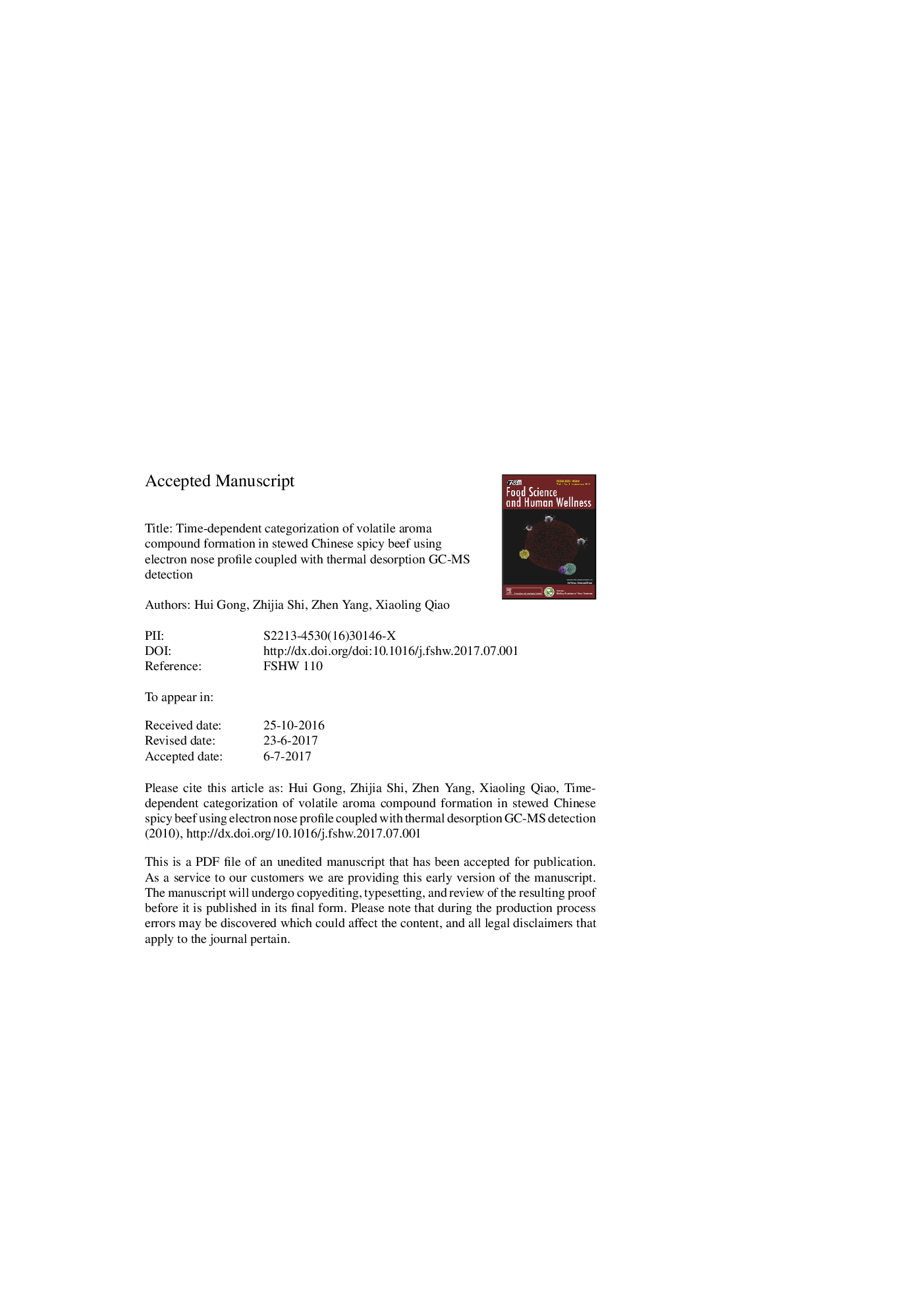| Article ID | Journal | Published Year | Pages | File Type |
|---|---|---|---|---|
| 8588768 | Food Science and Human Wellness | 2017 | 27 Pages |
Abstract
In the present study, flavor profiles of Chinese spiced beef in the cooking process were comparatively analyzed by electronic nose, gas chromatography-mass spectrometry (GC-MS) with a thermal desorption system (TDS), and solid-phase microextraction (SPME). A total of 82 volatile compounds were identified, and 3-methyl-butanal, pentanal, hexanal, Ï-xylene, heptanal, limonene, terpinene, octanal, linalool, 4-terpinenol, α-terpineol, and (E)-anethole were identified as the characteristic flavor compounds in Chinese spiced beef. Variation in the content of volatile components produced by different cooking processes was observed. In general, a cooking time of 4 h resulted in optimal flavor quality and stability. Results indicated that the electronic nose could profile and rapidly distinguish variation among different cooking time. The volatile profiling by TDS-GC-MS and responses from the electronic nose, in combination with multivariate statistical analysis, are a promising tool for control the cooking process of spiced beef.
Related Topics
Life Sciences
Agricultural and Biological Sciences
Food Science
Authors
Hui Gong, Zhen Yang, Meng Liu, Zhijia Shi, Jiapeng Li, Wenhua Chen, Xiaoling Qiao,
